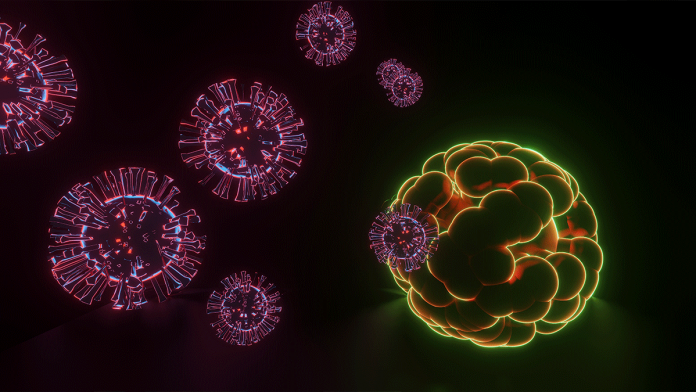An auto-immune disorder is characterized by an abnormal immune response, during which the immune system identifies the body’s own normal cells as foreign and targets them for attack. Medical professionals have identified eighty kinds of auto-immune disorders. Despite each of them being detrimental in its own way, the following are the deadliest kinds:
1. Grave’s disease.
Also known as toxic diffuse goiter, this disorder majorly results in an enlarged thyroid gland and hyperthyroidism. Thyroid stimulating immunoglobin (TSI) promotes excessive production of thyroid hormones, which leads to symptoms such as eye bulging, muscle weakness, sleep disorders and irregular heartbeat. Grave’s disease can be a result of both genetic and environmental factors. Patients suffering from other autoimmune diseases have a greater risk of developing Grave’s diseases. The ultimate treatment option includes radioiodine therapy, anti-thyroid drugs and thyroid surgery. If left untreated, this disorder can lead to life-threatening problems which include an abrupt increase in heart rate and blood pressure, pregnancy issues and osteoporosis.
Consider watching this video to know more about how stress weakens your immune system….
2. Addison’s disease.
This illness is characterized by the malfunction of the adrenal glands, resulting in extremely low production of the steroid hormones cortisol and aldosterone. Also called primary adrenal deficiency and hypocortisolism, the disease may be activated by tuberculosis, sepsis or bleeding into adrenal glands. Addison’s disease is an endocrine disorder which usually presents as abdominal pain, darkening of the skin and unintentional weight loss. Blood tests, urine tests and an abdominal MRI are the usual methods of diagnosis. The treatment includes oral corticosteroid medication to compensate for the absent hormones. If Addison’s disease worsens, it can lead to adrenal crisis which can be lethal.
3. Giant cell myocarditis.
Being a rare cardiovascular disorder, this disease was revealed to be one of the most fatal illnesses worldwide, according to researchers in New Jersey. The major pathology involves inflammation of the middle layer of the heart muscle, myocardium. Inflammatory cells called macrophages fuse together to form abnormally large masses called giant cells, which further lead to extensive destruction of the cardiac muscle. Patients suffering from giant cell myocarditis tend to develop heart palpitations, chest pain, fatigue and shortness of breath. Treatments for arrhythmias are often recommended whereas most patients require a complete heart transplant. Untreated or undiagnosed giant cell myocarditis can ultimately lead to cardiac failure.
4. Rheumatoid Arthritis.
This ailment primarily involves joint inflammation. The long-term auto-immune disease generally causes warm, swollen, painful joints. Knee, elbow and wrist joints are most commonly affected. Other complications include inflammation in the lung and heart tissues, and low red blood cell count. Furthermore, other signs include fever, consistent low energy and the usual onset is during middle age. Despite the cause being typically unclear, rheumatoid arthritis is known to be inherited. The body’s immune system begins attacking the joints, causing thickening of joint capsule and also worsening articular cartilage and bone tissue. NSAIDs and pain medication are usually given to patients for symptom management.
5. Multiple Sclerosis.
Multiple sclerosis is a disorder of the central nervous system during which demyelination occurs. This means that the insulating layers of myelin sheath covering the nerve cells are impaired. Patients generally suffer from diplopia (double vision), blindness in one eye, lack of co-ordination, muscle weakness and loss of sensation. The long-term idiopathic illness usually affects individuals aged twenty-five to fifty years, and is more prevalent among women than men. No cure has yet been discovered. However, medication and physical therapy can prevent worsening of the neurological symptoms.
The body’s defense mechanism holds extreme significance. It can turn into a nuisance once it turns against its own host.
Until Next Time,
Team Doctor ASKY!





















